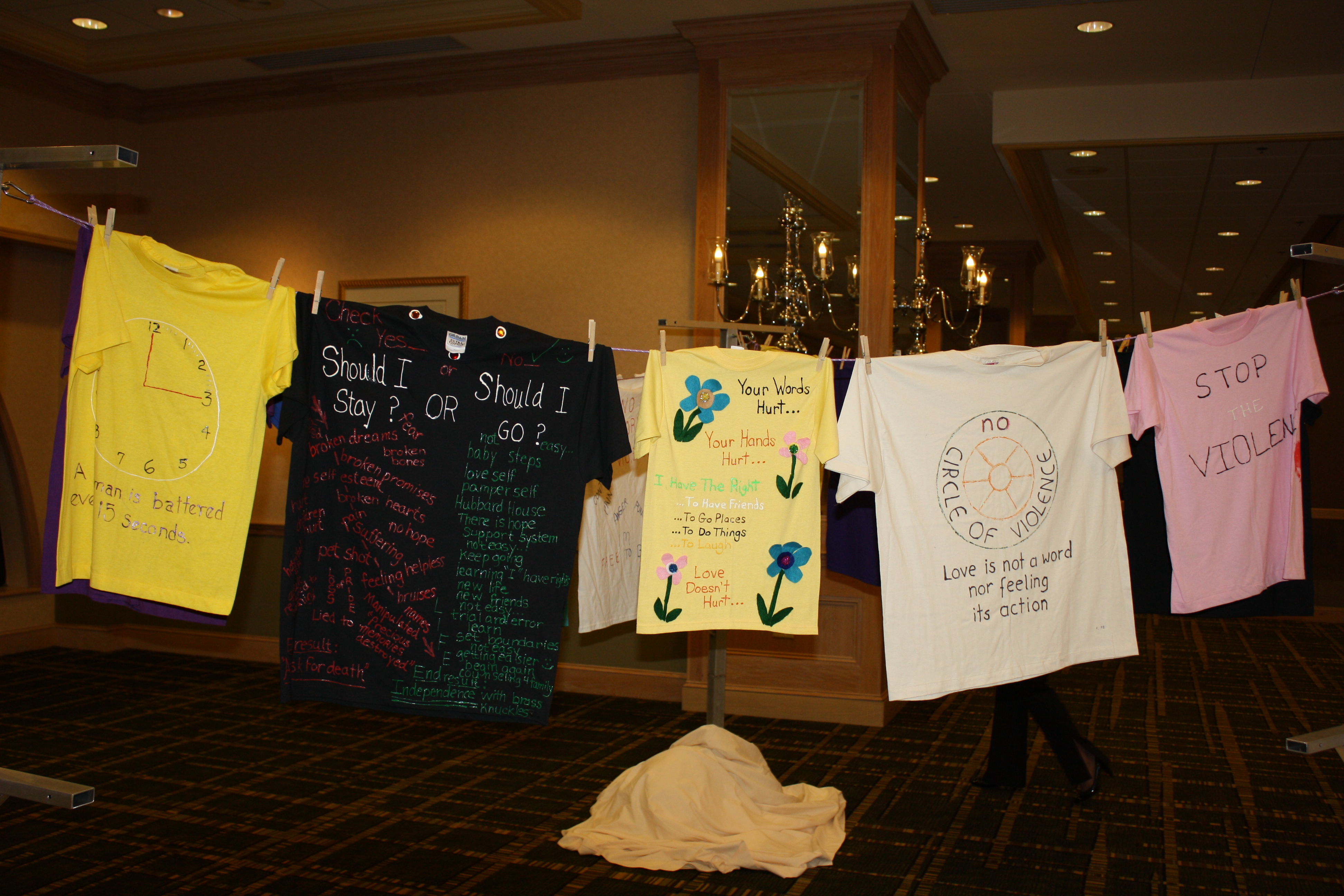 According to the Men’s Rape Prevention Project in Washington DC, 58,000 soldiers died in the Vietnam War. During the same time period, 51,000 women were killed as a result of domestic violence. In the summer of 1990, that statistic became the catalyst for a coalition of women’s groups in Cape Cod, Massachusetts to consciously develop a program that would educate, break the silence, and bear witness to one issue – violence against women.
According to the Men’s Rape Prevention Project in Washington DC, 58,000 soldiers died in the Vietnam War. During the same time period, 51,000 women were killed as a result of domestic violence. In the summer of 1990, that statistic became the catalyst for a coalition of women’s groups in Cape Cod, Massachusetts to consciously develop a program that would educate, break the silence, and bear witness to one issue – violence against women.
One of the women, visual artist Rachel Carey-Harper, moved by the power of the AIDS quilt, presented the concept of using shirts hanging on a clothesline as the vehicle for raising awareness about this issue. The idea is fitting since “doing the laundry” was considered women’s work, and in the days of close-knit neighborhoods, women often exchanged information over backyard fences while hanging clothes out to dry.
The concept was simple, let each woman tell her story in her own ways using words and/or artwork to decorate her shirt. Once finished, she would hang her shirt on the clothesline. In addition to serving as an educational tool for those who view it, the Clothesline Project also becomes a healing tool for those who make a shirt. By hanging the shirt on the line, survivors, friends and family can turn their back on some of the pain from their experience and walk away. Additionally, the Clothesline Project allows those who are suffering in silence to understand they are not alone. The Clothesline Project honors survivors, as well as victims of intimate violence.
The process of designing a shirt gives each survivor a new voice to expose an often horrific and unspeakable experience that has dramatically altered the course of their life.
The shirts on the “clothesline” are color coded to represent the form of abuse the victim endured and whether the victim survived the abuse they experienced.
- White t-shirts represent women who died as a result of violence.
- Yellow or beige t-shirts represent assaulted or battered women.
- Red, pink and orange t-shirts represent survivors of rape and sexual assault.
- Blue and green t-shirts represent survivors of incest and sexual abuse.
- Purple or lavender t-shirts represent women attacked because of their sexual orientation.
- Black t-shirts represent women attacked for political reasons.
Information provided by www.clotheslineproject.com
The Hubbard House Clothesline Project will be displayed at the 16th Annual Barbara Ann Campbell Memorial Breakfast. The shirts displayed on the exhibit have been made throughout the years by Hubbard House clients, staff and volunteers.
If you or anyone you know is in an abusive relationship please call the Hubbard House Domestic Violence Hotline at (904) 354-3114 or toll-free at (800) 500-1119.
ABOUT HUBBARD HOUSE
Hubbard House is a nationally recognized leader in domestic violence intervention. Founded as the first domestic violence shelter in Florida in 1976, Hubbard House is a certified, comprehensive domestic violence center providing programs and services to more than 5,000 women, children, and men annually in Duval and Baker counties. While Hubbard House is most known for its emergency shelter, the agency also provides extensive adult and youth outreach services, school-based education, therapeutic childcare, batterers’ intervention programs, court advocacy and volunteer and community education opportunities. Visit www.hubbardhouse.org to learn more.
By Vicky Krook
